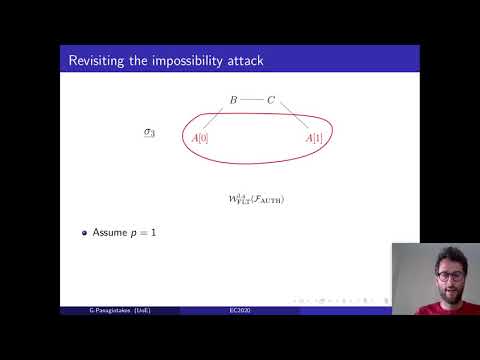CryptoDB
Resource-Restricted Cryptography: Revisiting MPC Bounds in the Proof-of-Work Era
| Authors: |
|
|---|---|
| Download: |
|
| Conference: | EUROCRYPT 2020 |
| Abstract: | Traditional bounds on synchronous Byzantine agreement (BA) and secure multi-party computation (MPC) establish that in absence of a private correlated-randomness setup, such as a PKI,
protocols can tolerate up to $t |
Video from EUROCRYPT 2020
BibTeX
@inproceedings{eurocrypt-2020-30244,
title={Resource-Restricted Cryptography: Revisiting MPC Bounds in the Proof-of-Work Era},
booktitle={39th Annual International Conference on the Theory and Applications of Cryptographic Techniques, Zagreb, Croatia, May 10–14, 2020, Proceedings},
series={Lecture Notes in Computer Science},
publisher={Springer},
keywords={Byzantine agreement;MPC;resource-restricted cryptography},
volume={12105},
doi={10.1007/978-3-030-45724-2_5},
author={Juan A. Garay and Aggelos Kiayias and Rafail M. Ostrovsky and Giorgos Panagiotakos and Vassilis Zikas},
year=2020
}

